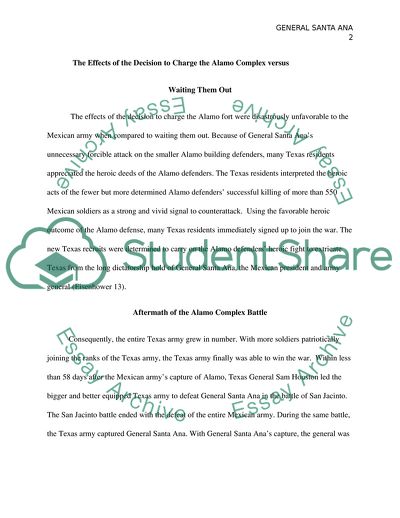Cite this document
(Rethinking The Nature of War: Santa Ana of Mexico Report Example | Topics and Well Written Essays - 3250 words, n.d.)
Rethinking The Nature of War: Santa Ana of Mexico Report Example | Topics and Well Written Essays - 3250 words. https://studentshare.org/history/1795755-general-santa-anas-poor-leadership-decisions-cost-him-to-loose-the-texas-revolution
Rethinking The Nature of War: Santa Ana of Mexico Report Example | Topics and Well Written Essays - 3250 words. https://studentshare.org/history/1795755-general-santa-anas-poor-leadership-decisions-cost-him-to-loose-the-texas-revolution
(Rethinking The Nature of War: Santa Ana of Mexico Report Example | Topics and Well Written Essays - 3250 Words)
Rethinking The Nature of War: Santa Ana of Mexico Report Example | Topics and Well Written Essays - 3250 Words. https://studentshare.org/history/1795755-general-santa-anas-poor-leadership-decisions-cost-him-to-loose-the-texas-revolution.
Rethinking The Nature of War: Santa Ana of Mexico Report Example | Topics and Well Written Essays - 3250 Words. https://studentshare.org/history/1795755-general-santa-anas-poor-leadership-decisions-cost-him-to-loose-the-texas-revolution.
“Rethinking The Nature of War: Santa Ana of Mexico Report Example | Topics and Well Written Essays - 3250 Words”. https://studentshare.org/history/1795755-general-santa-anas-poor-leadership-decisions-cost-him-to-loose-the-texas-revolution.


